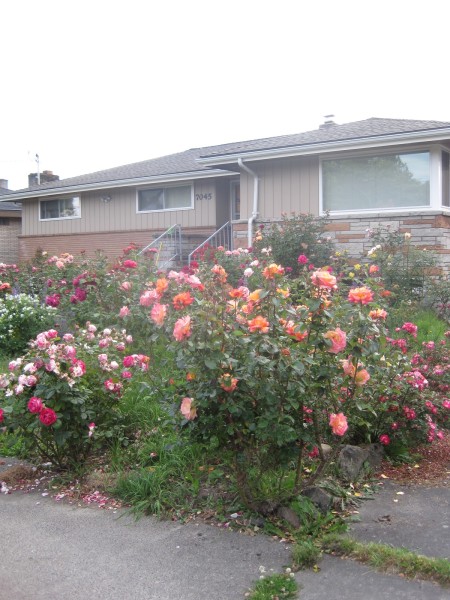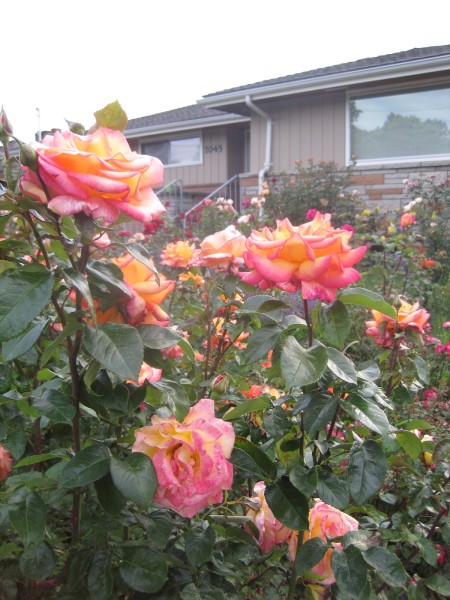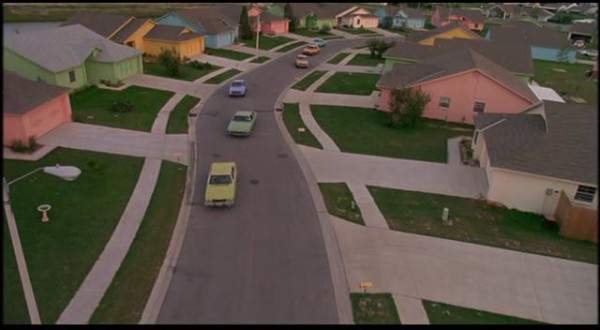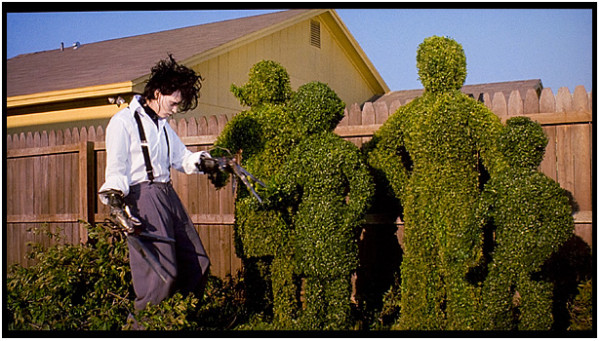Just a few blocks from the nearby summer dahlia stand I frequent is a modest house with thin red and grey bricks, taupe siding, and a recessed front door. It would be unremarkable except for its extraordinary front garden. Its owners have surrendered conventional green grass to an insurrection of rosebushes. They grow without rhyme or row, scattered about and occupying most of the plot of yard and the entire median strip. Brash whites, yellows, pinks, oranges, and reds vie for visual attention against the unassuming façade of the house behind. The sign on the door reads, “No Solicitors,” but the garden implores you to slow your step, look, and wonder.

An insurrection of rosebushes in Seattle. Images by the author.

In Tim Burton’s 1990 film Edward Scissorhands, the single-family residences look similar to this rosebush house minus its eccentric landscaping and with the addition of monochromatic coats of paint. Unlike the riotous rosebushes, these pastel-colored buildings assume a tight visual order, matching if not identical in color, evenly spaced, and parading around the curving road and corresponding sidewalks like a regiment of suburban soldiers. This suburban conformity mirrors the town’s strict social norms; men work, housewives gossip, and teenagers break rules. And then Edward arrives and bursts open both the limited visual language of the suburban town and its exacting confines of accepted behavior.
As he so often does, Burton makes what seems, at first blush, strangest what we ultimately appreciate as most beautiful. Edward, left unfinished at the sudden death of his inventor, has an unfashionably wild mane of black hair and sharp scissors for hands, but his unconventional physique harbors a heart that is pure and motivated by love. The town’s seemingly ordinary social covenant and the many citizens who live by it, conversely, are exposed at the end of the film as false, ugly, intolerant, and uncompromisingly narrow.
Edward Scissorhands is compelling for the way the eccentric and the everyday collide and then combust. The incongruity of those untamed rosebushes alongside that inconspicuous house near my own home here in Seattle beguiles, just like Burton’s film.

